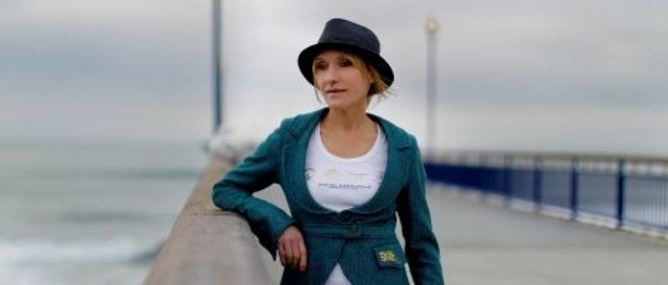Worse still, it confirmed my fears that hipsters are moving in on – colonising – food. Enter any deli, coffee bar or wine shop and you’ll see their influence. Food packaging is becoming achingly cool. Now that hipsters have somehow popularised the beard, the chequered shirt and carefully selected bottled beer, they’ve become restless – and they’re setting their sights on food. Food, you see, is the New Hip.
Of course there’s always been a certain amount of pretentiousness around food. A big dollop of hype, a large side-order of silly. (Remember foam cuisine?) Until recently, though, it was confined to enclosed spaces such as restaurants or private kitchens. Now it’s out on the streets. It’s in the parks, airports and stations. Models, actresses and street-style bloggers are always On the Go, and they want to tote food and drink that looks just as good as they do. They want food to look cool with, food to be papped with. Food is the New Accessory!
Once upon a time, fashion magazines were about clothes. After someone at American Vogue put a celebrity on the cover, they became about celebrities. Then celebrity lifestyles and houses. Then travel. Now – somewhat ironically, considering that fashionistas rarely eat – food is the new fashion superstar. On a page dedicated to pink – pink silk shirts, pink satin cushions, pink cashmere scarves – appears a beautiful, luscious pink smoothie, bursting with free radicals, packaged like a work of art, and costing almost as much. If you’ve paid 9 Euro for something consisting of 70 percent water, why not strut around with it? Food is the New Handbag.
On Monday I went to the supermarket with my neighbour’s kid: six years old, American, and longing to relive campfire memories of toasting marshmallows over a flame. I’d anticipated finding an XL pack of ordinary, run-of-the-mill, pink-and-white marshmallows, as tough as old boots and as cheap as dirt. Instead, what we found was Pop. It was Hip, it was Handbag. To be specific, it was «Vegetarian and Vegan Vanilla Mallow Pillow Delights». Gelatine, artificial-colour and artificial-flavour free; gluten, egg and dairy free; soy, nut and tree nut free (even though for some reason the brand featured a smiling monkey). They came in eye-wateringly expensive, shiny blue 75-gram packets. They cost a bomb, looked like teeny-weeny shreds of polystyrene, and tasted of nothing we could recognise. «They look better than they eat,» said Jonathan, sweetly, ungrammatically, and accurately.
In the next aisle we discovered that New Food must not only be expensive and look sensational, it must also reek of exclusivity. You don’t buy cereal for the whole household anymore. You buy it to define your identity and to show the world – via selfies, taken at your Philippe-Starck-inspired breakfast bar and posted on Instagram – just how stylish your individualised breakfast choices can be.
«Look!» Jonathon picked up a shiny silver tubular object, costing almost as much as breakfast at the Ritz. «MY MUESLI», it read in a hip-fonted, disturbingly self-centred way. «Why My?» Jonathon looked puzzled. «Is it a one-portion serving?»
I couldn’t bear to break the news to him that Food is the New Diva. That once its function was to boost protein and carb levels, and now it’s designed to boost the ego. Quickly I shepherded him away, shielding his eyes from the row of luxury bio-sourced chocolate bars crooning «Mein Moment».







